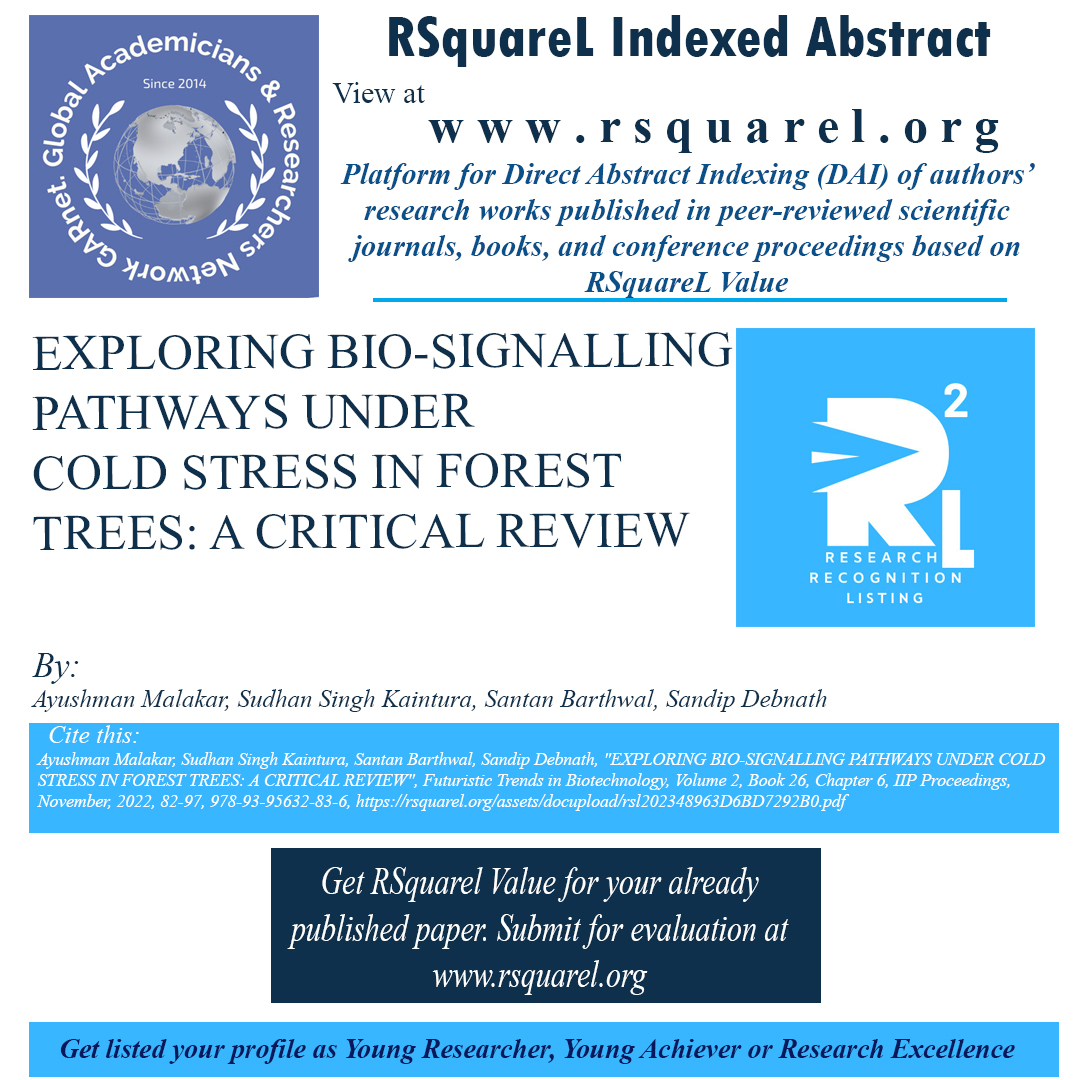EXPLORING BIO-SIGNALLING PATHWAYS UNDER COLD STRESS IN FOREST TREES: A CRITICAL REVIEW
Area/Stream: Biotechnology, Authors: Ayushman Malakar, Sudhan Singh Kaintura, Santan Barthwal, Sandip Debnath Keywords: cold stress; cold responsive genes; signal transduction; transcription factors; tree improvement Book Name /series: Futuristic Trends in Biotechnology, Volume 2, Book 26, Chapter 6Publication: IIP Proceedings Year: 2022, Month: November Page No: 82-97, ISSN/ISBN: 978-93-95632-83-6, DOI/Link: https://rsquarel.org/assets/docupload/rsl202348963D6BD7292B0.pdf
Abstract:The objective of breeding and development programmes for cold-hardy forest trees is to provide non-destructive laboratory procedures for evaluating the trees' cold tolerance. Through the expression of stress-responsive genes, forest plants are able to tolerate the cold. In cells, the Cold regulated genes (CORs) are implicated in cold and frost defense. CBFs (C-repeat Binding Factors) regulate a variety of genes involved in osmolyte synthesis and other protective processes as mediators during cold stress and its acclimation in higher plants. Several biochemical techniques, including the detection of catalase activity, proline, etc. in exposed cells, may be used to assess cold stress. The cold sensitivity and cold stress tolerance of exposed cells may be assessed by measuring the levels of these chemicals. Electrolyte leakage or Ion leakage is the most often used screening test for assessing cold or frost damage and hardiness in woody tree species. Both genetic and hybrid adaptations may provide cold resistance to a species. Forest cold stress responses demand genetic understanding of tree stress physiology. Due to the complexity of forest tree genetics, our understanding of the genetic regulators that govern this response in woody perennials is limited. An interdisciplinary approach, combining genetics, genomics, and phenomics are required to comprehend cold stress processes in forest trees and how tree growth efforts may increase resilience. Genomes, sequencing of the next generation, and computational biology have made the study of cold stress in forest.
